Experimental Module Composition
FishTrack Zebrafish Behavior Analysis System, offers an innovative solution for zebrafish research. This fully automated system minimizes human error, enhances efficiency, and supports tracking and analysis of up to 96 zebrafish larvae in multi-well plates, as well as precise trajectory tracking for adults or groups. Its modular design accommodates diverse research needs:
- Adult Zebrafish Behavior Analysis Module
- Larval Observation & Analysis Module (Multi-Well Plate Testing System/Zebrafish Behavior Quantification System)
- 3. Zebrafish Microscopic Behavior Module (e.g., embryo activity, cardiovascular measurements morphological analysis)
- Zebrafish Visual Behavior Module (OMR, OKR testing)
- Zebrafish 3D Behavior Module
Adult Zebrafish Behavior Analysis Module
This module adapts rodent-based behavioral paradigms to assess zebrafish learning/memory, social behaviors, anxiety, and depression. The software tracks trajectories and calculates metrics such as swimming distance, dwell time, zone entries, speed, and more.
Key apparatus include:
- T-maze
- Cross interaction device
- Open field tank
- Novel object recognition tank
- Trapezoidal water chamber
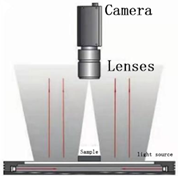
Features:
- Uniform infrared backlighting for interference-free imaging
- Camera resolution: >1080P, 30-60 fps.

Key Functions:

1. The system provides seven object recognition methods: intelligent recognition, grayscale method, static background subtraction, dynamic background subtraction, Gaussian background model, chromaticity analysis, and deep learning models, capable of handling nearly all challenging experimental environments. It supports quantitative visualization of zebrafish behavioral data, including trajectory maps, trajectory vector diagrams, heatmap(2D/3D), and activity distribution charts (2D/3D).
2. The system features comprehensive I/0 controls to integrate behavioral data with biological signals (EEG, blood pressure, neuronal activity, ultrasonic vocalizations) and experimental stimuli audio, light, electric shocks), enabling expandable opto-acoustic-electrical stimulation experiments on zebrafish.
3. The system supports both cloud-based and on-premises deployment. Users can conduct experiments directly via web browsers without installing desktop software. Mobile access via PCs, smartphones, or tablets allows real-time video playback, online data viewing/analysis/downloading, and monitoring of analysis progress through a WeChat Mini. Program with integrated online inquiry functionality.
4. High-throughput testing capabilities are embedded to enhance experimental efficiency
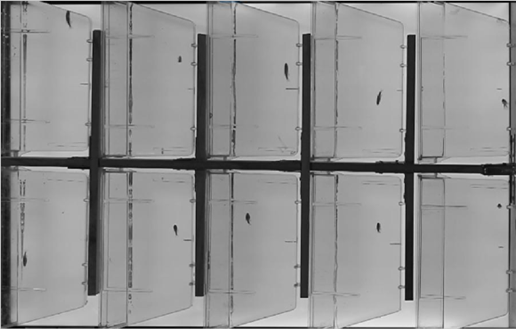
5. Measured metrics include swimming distance, zone entry frequency/duration, behavioral event duration/frequency, and tail flick counts.
6. The system quantifies zebrafish behavioral states (minor, normal, and intense movement) while detecting freezing/immobilization states.
7. Numerical data, event markers, and animal motion videos are integrated into a single visual interface for user validation and data filtering.
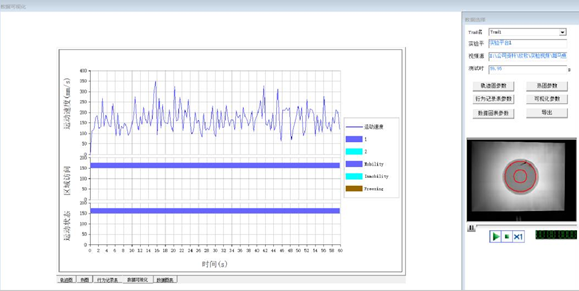
8. The software performs global animal tracking to analyze interactive behaviors among multiple zebrafish.
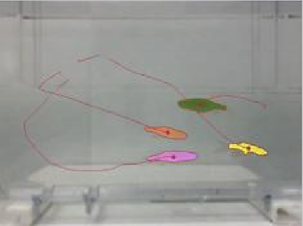
9. Equipped with an HD camera (30-60 fps, >1080P resolution), infrared filters, and adjustable-power IR illumination, the system ensures optimal tracking conditions for aquatic species.
Larval Fish Observation and Analysis Module
The larval fish observation and analysis module is designed for high-throughput tracking of behavioral trajectory data in zebrafish larvae within multi-well plates. The zebrafish observation chamber is compatible with various plate formats, such as 96-wel, 48-well, and 24-well dishes. The system can be expanded with additional modules, including a water circulation and temperature control module sound and vibration stimulation module, and light stimulation module, to enable diverse behavioral assays.
- Water Circulation and Temperature Control Module
The temperature control module, an accessory for the zebrafish observation chamber, connects directly to the chamber to autonomously regulate internal temperature via circulating water flow. Its innovative design allows precise control of temperature conditions. The operating range spans 15°C to 40°C, with water temperature measured directly at the well plate for accurate real-time monitoring. This module provides an ideal controlled environment for tracking zebrafish larval activity, locomotion, and behavior, particularly suited for long-term circadian rhythm studies.
- Sound and Vibration Stimulation Module
The vibration stimulation module is primarily used to study zebrafish startle responses. Integrated into the observation chamber, discrete vibration stimuli are generated by tapping the microplate holder base. Researchers can adjust vibration intensity levels to quantify experimental outcomes.
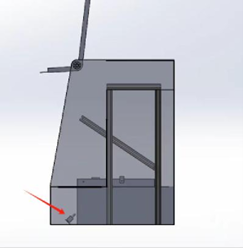
- Light Stimulation Module
The light stimulation module is tailored for circadian rhythm research in zebrafish larvae. Users can simulate day-night light cycles via software-controlled illumination, with adjustable intensity (0-8000 Lux). Light is emitted from the bottom light panel to optimize zebrafish stimulation. The module also supports short-term light pulses or prolonged high-intensity light exposure for sleep deprivation experiments.
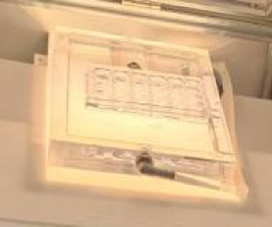
Key Feature:
- Object Recognition Methods:
The system offers seven detection algorithms-Smart Recognition, Grayscale Method, Static Background, Dynamic Background, Gaussian Background, Chromaticity Method, and Deep Learning Model-to handle nearly all challenging experimental conditions. it supports quantitative behavioral data visualization, including trajectory maps, vector trajectoryplots,2D/3D heatmaps, and 2D/3D activity maps;
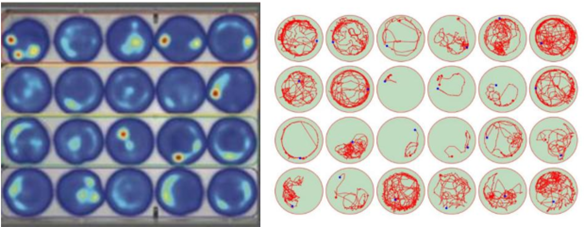
- High-Quality lmaging & Uniform lllumination:
Equipped with a high-resolution camera and an ergonomically designed observation chamber to eliminate edge distortion in multi-well plates. A backlit flat tray ensures uniform lighting across all wells and minimizes shadows.
- Anti-Distortion Lens Design:
Utilizes a dedicated lens design to prevent corner distortion, ensuring complete video capture and accurate test results.
- Advanced Tracking Hardware:
Features a high-definition camera, infrared (lR) filters, and an adjustable IR illumination system for optimal tracking conditions.
Camera specs: 30-60 frames per second (FPS), >1080P resolution.
- IR illumination: Adjustable intensity for enhanced visibility.
- Multi-Plate Compatibility:
Accommodates 6-,12-,24-,48- or 96-well plates (or custom dish formats) for high-throughput larval fish experiments.
- Precision Temperature control:
Integrated water circulation system for long-term behavioral monitoring.
- Temperature range: 15’C to 40°C.
- Control accuracy: +0.1°C.

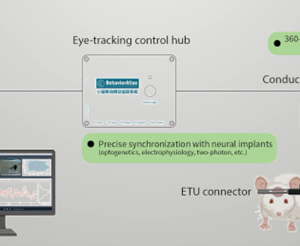
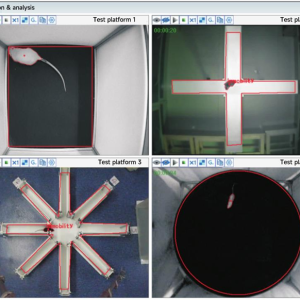
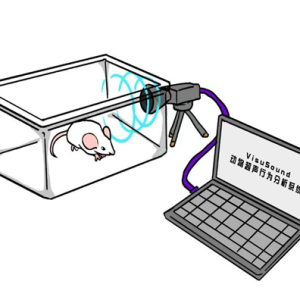
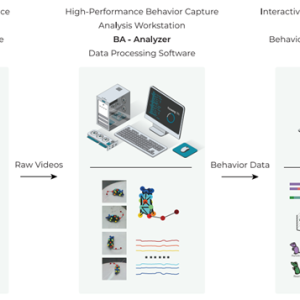
Reviews
There are no reviews yet.